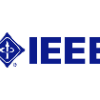A Medical Body Area Network (MBAN) is an ensemble of collaborating, potentially heterogeneous, medical devices located inside, on the surface of or around the human body with the objective of tackling one or multiple medical conditions of the MBAN host. These devices -- which are a special category of Wireless Body Area Networks (WBANs) -- collect, process and transfer medical data outside of the network, while in some cases they also administer medical treatment autonomously. Since communication is so pivotal to their operation, the newfangled IEEE 802.15.6 standard is aimed at the communication aspects of WBANs. It places a set of physical and communication constraints while it also includes association/disassociation protocols and security services that WBAN applications need to comply with. However, the security specifications put forward by the standard can be easily shown to be insufficient when considering realistic MBAN use cases and need further enhancements. The present work addresses these shortcomings by, first, providing a structured analysis of the IEEE 802.15.6 security features and, afterwards, proposing comprehensive and tangible recommendations on improving the standard's security.
翻译:医疗机体地区网络(MBAN)是人体内部、表面或周围合作、可能具有多样性的医疗装置的集合体,目的是处理MBAN东道方的一个或多个医疗条件,这些装置是无线机体地区网络的特殊类别,在网络之外收集、处理和传输医疗数据,而在某些情况下,它们也自主管理医疗,由于通信对其运作如此关键,新的IEEE 802.15.6标准是针对WBAN的通信方面的,它设置了一套有形和通信方面的限制,同时也包括了WBAN申请需要遵守的结社/隔离协议和安保服务,但是,在考虑现实的MBAN使用案例时,这些标准提出的安全规格很容易证明不够充分,需要进一步加强,目前的工作通过下列方法解决这些缺陷:首先对IEEE 802.15.6安全特征进行系统分析,然后就改进标准安全提出全面、具体的建议。




